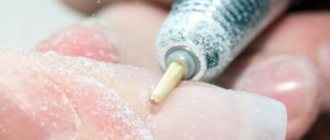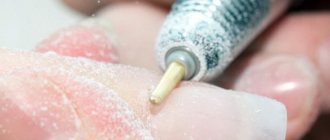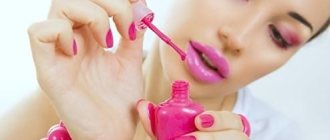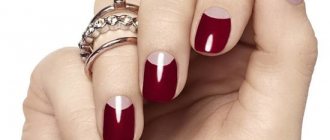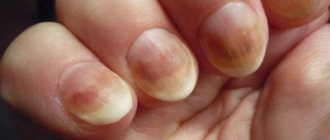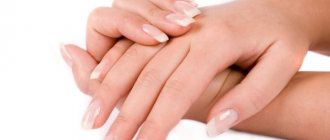How to paint your nails correctly: 20 useful life hacks
Despite the fact that salon manicure requires not only time, but also financial investment, many prefer to entrust their hands to professionals. This often happens because manicure at home involves a number of difficulties. Experts are confident that painting your nails perfectly at home is not at all difficult. Especially if you know twenty useful life hacks that will help you.
1. Three strokes are enough. “Dip the brush into the bottle of polish and place a decent-sized dot at the base of the nail. Now draw a vertical line from it along the left edge, then go back and draw a line along the right edge. It may take extra time, but the base makes the manicure more durable and prevents pigments from penetrating into the nail plate,” explains Whitehill.
3. Use a lipstick brush. To remove polish from cuticles and other areas that you've stained during your manicure, arm yourself with a thin lip brush that you no longer use for its intended purpose.
4. Find the right white. White polish looks amazing on nails of any length and instantly makes the skin look more tanned than it actually is. Remember that the product must be sufficiently pigmented (test it on paper, not white), and best of all, with the presence of a delicate shimmer.
5. Do not use express drying regularly. We agree that in some cases this product is simply necessary, but with regular and long-term use it can lead to dehydration of the nail plate.
6. Always use cuticle oil. “As soon as you finish your manicure, immediately apply nourishing oil to the cuticles. “Coat the entire surface of the nail with oil. This won't damage your manicure, but it will give your nails some slip if you accidentally bump your hands, and therefore protect them from damage,” says Whitehill.
7. Keep your hands under cold water. If you decide not to use express drying and need to leave the house after 15 minutes, keep them under cold water for 1-2 minutes. The effect will be no worse.
8. Make the neon shade even brighter. To get truly neon nails and not a poor imitation of them, apply a layer of pigmented white polish instead of a base coat.
9. Apply varnish in thin layers. The thinner the layer, the faster it will dry - everything is logical. But do not forget that even three (and possibly four) thin layers of varnish will dry faster than one thick one.
10. Keep the polish in the refrigerator. This may be a revelation to you, but it is really recommended that you store your polish in a dry, cool, dark place. So a shelf in the refrigerator is an ideal option in this case to preserve the formula of the product, saving it from the harmful effects of heat and UV rays.
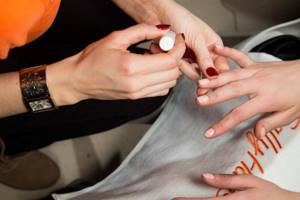
11. Mix textures. If the texture of your new nail polish seems too thick and sticky, add a few drops of a similar color liquid polish (or clear polish). It is best if both products are from the same manufacturer - but this is not a prerequisite.
12. Never shake the polish. “Instead of habitually shaking the product before use, slowly turn it upside down and then just as slowly return it to its original position. This technique ensures that there are no air bubbles in the polish or on your nails,” says Whitehill.
13. Don't cut your cuticles. Just accept it—the more often you trim your nails, the messier your cuticles will look over time (and this will happen more often). It is better to use a special remover (cuticle solvent) containing oils and an orange stick.
14. Use wire cutters if you have hangnails. Only in this case can you afford to use the device. “Hangnails are inevitable, even if you don’t part with hand moisturizer. And, unfortunately, the only way to get rid of them is to simply cut them off,” says Whitehill.
15. Stay away from hot water. “If you just got your nails done, washing dishes or taking a hot shower is a bad idea,” says the expert. — Hot water is one of the main enemies of a perfect manicure. It causes the nail plate to expand, which leads to cracks and imperfections.”

16. Remove varnish with a non-acetone product. Acetone tends to dry out your nails, so if you already have dry nails or are trying to make them stronger and healthier, it's best not to use this formula.
17. Experiment with glitter. Despite the fact that varnishes with glitter are famous for their complex removal scheme, they can extend the life of a manicure not by a couple of days, but by a week. Buy a top coat with subtle glitter so you don't have to give up your favorite shades. And when you decide to remove your manicure, apply liquid without acetone to cotton pads, wrap each nail with foil - and wait 10 minutes.
18. Apply polish in one direction. A small but important feature is to move the brush in one direction to reduce the risk of chipping after the varnish is completely dry. It really works!
19. Choose the safest varnishes. Make sure that the product formula does not contain formaldehyde, toluene and dibutyl phthalate (DBP) - these ingredients have the ability to accumulate in the body and cause harm to health in the long term.
20. Always use a top coat. The final touch to the manicure should be a top coat - a top coating that will increase the durability of the makeup. Another helpful tip from the pros: don't forget to "seal" the tip of your nail by drawing a thin horizontal stripe across it.
Chefs are prohibited from cooking while wearing rings, painting their nails, and not carrying things in their pockets.
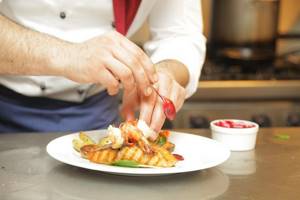
This may be a factor in the transmission of infection, chemical contamination and mechanical hazards Story: Instructions
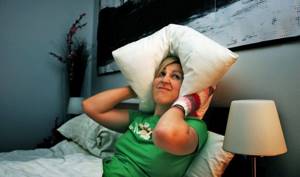
Are the neighbors noisy? There are ways to calm them downEmergency warning: Abnormal heat will hit Berdsk from August 2 to 6More 173 news
On International Chefs Day - October 20 - Rospotrebnadzor reminds of the role of sanitary clothing in public catering. Catering workers are constantly in contact with food products, which can pose a danger both to the quality of the finished product and to the health of the consumer.
Why do we need sanitary clothing?
In order to protect food products from contamination and ensure sanitary and epidemiological well-being at facilities whose activities are related to the production and circulation of food products, there are requirements for the use of sanitary (special) clothing by employees at food industry, catering and trade enterprises.
Which document approves the standards for sanitary clothing?
This sanitary legislation does not provide a specific list of working (sanitary and special) clothing for employees of enterprises, including those involved in the production and distribution of food products.
Standard standards for cooks and assistant cooks establish the following standards for the issuance of workwear for the year: a suit for protection against general industrial pollution and mechanical influences (1 pc.), an apron made of polymer materials with a bib (2 pcs.), sleeves made of polymer materials until worn out.
If you work with food raw materials and food products (preparing dishes and culinary products, distributing ready-made meals, loading, transporting, receiving food products), then every day when you come to work you need:
1. Leave outerwear, shoes, hats and personal belongings in a specially designated place. Street clothing and personal items can be a source of contamination. Therefore, when contacting food, it is necessary to use special, clean clothing intended only for this purpose and stored separately from personal belongings.
2. Tuck your hair under a cap (scarf) or put on a special hair net.
3. If you are a chef and directly prepare dishes and culinary products, remove jewelry, watches and other breakable items, cut your nails short and do not varnish them, do not use pins, and remove foreign objects from your pockets.
The ingress of foreign objects and particles (hair, bristles, pieces of varnish, pins) into food is unacceptable! This can be a factor in the transmission of infection, chemical contamination and mechanical hazards.
Test yourself and your colleagues!
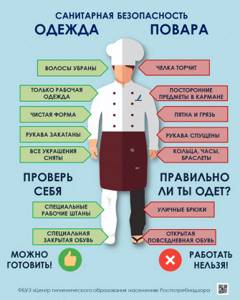
Check yourself and your colleagues. Memo for cooks
School chefs officially banned from wearing nail extensions
“The old Sanitary Regulations, approved in 2008, concerned only schools and vocational schools. Today, work is underway to create a single document, which will also include kindergartens,” said Zhanetta Gorelova, head of the laboratory of scientific foundations for monitoring the nutrition of students at the Research Institute of Hygiene and Health Protection of Children and Adolescents, Federal State Autonomous Institution Scientific Center for Health Protection of the Ministry of Health of Russia.
She noted that now the requirements for organizing meals for preschoolers are included in the rules for the design, maintenance and maintenance of kindergartens.
According to Gorelova, SanPiNs, as a rule, are revised or supplemented once every 5–8 years. Several leading institutes of the country are working on them at once: Research Institute of Nutrition of the Russian Academy of Medical Sciences, Research Institute of Hygiene and Health Protection of Children and Adolescents, Research Institute of Baby Nutrition, as well as representatives of Rospotrebnadzor of the Russian Federation and regions.
“Everything is spelled out in detail in the SanPiNs, taking into account the current state of affairs. The rules and requirements presented in this document are advisory in nature and must be followed,” says Zhanetta Gorelova.
She noted that work on new requirements for child nutrition began in 2014, but the final document is under discussion and could be put into effect in the next school year.
The current version contains some changes regarding the organization of meals for schoolchildren and vocational school students. The section on staff hygiene, for example, states that cooks working in school kitchens should not wear their nails.
“The SanPiN of 2008 also included a clause stating that cooks should not paint their nails or wear jewelry. It’s just that cosmetology is developing, and clarifications have been made in the new rules,” explained Zhanetta Gorelova.
The new rules also require that dining room attendants setting tables must wear aprons, hats and comfortable non-slip shoes.
Innovations have also appeared in the section of requirements for organizing a healthy diet: in addition to describing the assortment of the buffet, products that can be purchased through vending machines are now listed (juices, nectars, instant fortified drinks, sterilized milk and milk drinks, drinking water; fermented milk drinks, hard rennet cheeses – in packaging up to 125 grams, bakery products – in packaging up to 100 grams, nuts (except peanuts), dried fruits – in packaging up to 50 grams, cookies, waffles, mini-cakes, gingerbreads, toffee, marshmallows, confectionery bars, sweets (except caramel ), chocolate – in packaging up to 50 grams).
The approximate menu, the list of products from which dishes are prepared, the weight of portions in school canteens have not changed, and the time allotted for lunch is still 20 minutes.
